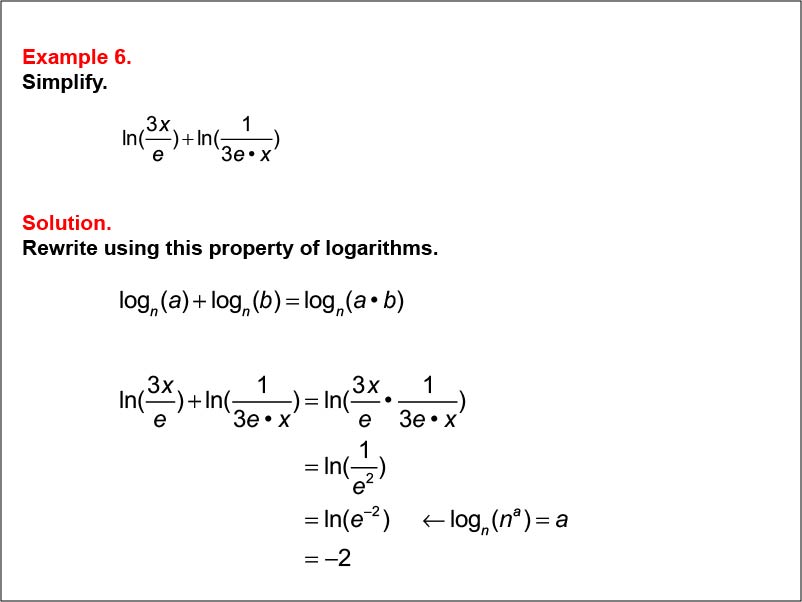
Display Title
Math Example: Laws of Logarithms: Example 06
Display Title
Math Example: Laws of Logarithms: Example 06

Topic
Logarithms
Description
This example illustrates the simplification of a natural logarithm expression using the product property. The problem involves simplifying ln(3x/e) + ln(1/3e * x). By applying the property that the sum of logarithms equals the logarithm of the product of their arguments, we get ln((3x/e) * (1/3e * x)). This simplifies to ln(1/e2), which is equivalent to ln(e-2), resulting in -2.
Understanding the Laws of Logarithms is essential for manipulating and simplifying logarithmic expressions, especially those involving natural logarithms and the constant e. These examples provide students with practical applications of these laws, helping them develop problem-solving skills and mathematical intuition. By working through various scenarios, students learn to recognize patterns and apply appropriate strategies.
Exposure to multiple worked-out examples is crucial for students to fully comprehend logarithmic concepts. Each example presents a unique situation, allowing students to see how the laws of logarithms can be applied in different contexts, particularly with natural logarithms. This repetition reinforces understanding and builds confidence in tackling complex problems involving e and variables.
Teacher's Script: As we work through this example, pay attention to how we handle the constant e and the variable x. Notice how some terms cancel out and how we can simplify expressions involving e. Can you think of any real-world applications where natural logarithms and e are commonly used?
For a complete collection of math examples related to Logarithms click on this link: Math Examples: Laws of Logarithms Collection.
| Common Core Standards | CCSS.MATH.CONTENT.HSF.BF.B.5 |
|---|---|
| Grade Range | 9 - 12 |
| Curriculum Nodes |
Algebra • Exponential and Logarithmic Functions • Laws of Logarithms |
| Copyright Year | 2013 |
| Keywords | logarithms, laws of logarithms |